|
It doesn’t matter what time of year it is when it comes to sipping rosé wines. But, a chilled glass of rosé in hand during the warmer months is quite divine! The spring and summer seasons always bring stunning blooms bursting with an array of colors and seductive fragrances. Not to be outdone by mother nature, rosé wines are made in various styles, enticing aroma and alluring shades of pink. And the bottles tend to be beautiful as well. With so many choices on the market, one might be inclined to start a rosé garden! In its simplest terms, wine gets its color from the skin of grapes, and there are several methods of achieving this with rosé wine. Limited Skin Maceration Rosé wine is produced from red grapes with limited skin contact during maceration. After harvest, the grapes are crushed, and the juice is allowed time on the skins, which could be just a few hours or up to a week. The less time spent on the skins, the lighter the color of the wine will be. The longer the maceration, the darker and more flavorful the rosé will tend to be. After maceration, the juice is drawn off, and fermentation of the wine begins. Direct Press With this method, the grapes are pressed to remove the skins (such as with white wines), and juice is immediately drawn off, only allowing the juice to contact the skins for a very short time. This process produces some of the lightest-hued rosés. Winemakers often use this method for darker-skinned grapes. Saignée Method This method is also referred to as the “bleeding” method. It was originally a method used to make concentrated red wines. With this technique, red wines are vinified using a standard process, but in the early stages of maceration, the winemaker will “bleed” some of the red wine juice from the tank and then vinify it separately as a rosé. Saignée rosés are richer, darker, and more flavorful. Some winemakers like to age their Saignée rosés in oak barrels. The variety of grapes used, the regions, production techniques, and harvest year all play a significant role in these wines’ style, color, and flavor. Rosé wines can range from delicate to rich, extra-dry to sweet, simple tank fermentation to barrel-fermented, and runs the spectrum of diverse flavors such as light citrus to deeper, fruitier wines. For many consumers, buying rosé wine is motivated by the “pink” wine in a pretty bottle that complements the care-free months of warm weather. For others, it is the country, region, style, and grape variety that influences their purchase. Here are a few pretty shades of pink in both still and sparkling style that I hope inspire you to start your rosé garden! Still Rosés France Château Puech-Haut Tête de Bélier Rosé AOP Languedoc 2019 The grape blend for this rosé is 99% Mourvédre and 1% Grenache, sourced from Languedoc-Saint Drezery vineyards. Aroma: Citrus, strawberry, floral, and a touch of minerality Palate: Lovely layers of fresh berries, notes of exotic fruit, citrus, and spice. A complex wine with a generous mouthfeel and long finish. Alcohol: 14.1% SRP: $34 Jean-Luc Colombo Cape Bleue Rosé 2020 This is a blend of 67% Syrah and 33% Mourvédre. Grapes are sourced from vineyards in the hills above the bay of Marseille, next to Provence. The saignée method is used, and then the wine juice is fermented in stainless steel tanks for three weeks. Aroma: Rose petals, raspberry, white stone fruit, and watermelon Palate: Crisp and refreshing with notes of raspberry, peach, minerality, and a touch of sour cherry. Alcohol: 12.5% SRP: $14.99 Côté Mas Aurore Rosé Pays d’Oc IGP 2020 Domaines Paul Mas is located in Languedoc, where 20% of the estate vineyards are farmed organically, with the rest farmed using sustainable practices. This rosé is a blend of 50% Grenache, 30% Cinsault 10% Syrah, and 10% Vermentino. The bottle is very eye-catching with its colorful label! Aroma: Floral, strawberry, cherry, and a hint of melon Palate: Ripe red fruit with lush berries and nice acidity with a mineral edge on the finish. Alcohol: 14.2% SRP: $13.99 Spain Inazio Urruzola Getariako Txakolina Rosé DO 2019 This estate is located in the heart of Basque country. The wine is a blend of two indigenous grapes, 50% Hondarr Abi Zuri and 50% Hondarr Abi Beltza. Aroma: Floral, fresh berries, and green apple Palate: Juicy fruit, berries, ruby grapefruit, Vibrant acidity balanced with minerality. Quite refreshing. Alcohol: 10.5% SRP: $20 Italy Bertani Bertarose IGT 2020 The historic Bertani winery is located in the Veneto region of Italy. This rosé is made with 75% Molinaro and 25% Merlot. Grapes are sourced from hillside vineyards above Lake Garda. Grapes are vinified separately, with only the Molinaro having skin contact. The blend is then aged in stainless steel tanks for about three months on the lees. Aroma: Floral, red and dark fruit, pomegranate, and grapefruit. Palate: White flowers, ruby grapefruit, strawberry, and a hint of cherry. Lovely balance between acidity and salinity. Alcohol: 12% SRP: $19.99 Planeta Sicilia DOC Rosé 2020 Planeta has vineyard locations in five territories spread throughout Sicily with six boutique wineries. The grapes for this rosé were sourced from Dispensa Estate in Menfi (western Sicily) and is a blend of 50% Nero d’Avola and 50% Syrah. Aroma: Floral, red berries, melon Palate: Berries, white stone fruit. A refreshing, dry wine with crisp acidity and hints of minerality and salinity. Alcohol: 12.5% SRP: $19.99 Austria Pratsch Niederösterreich Rosé 2020 This wine is made from 100% Zweigelt grapes sourced from organic vineyards in the Weinviertel region bordering Vienna. Aroma: Strawberry, hints of citrus Palate: A delicate and dry rosé with flavors of pear, strawberry, and juicy white stone fruit. Refreshing acidity and lemon zest on the finish Alcohol: 11.5% SRP: $13 Argentina Susana Balbo Signature Rosé 2020 Sourced from Valle de Uco in Mendoza, this rosé is a blend of 60% Malbec and 40% Pinot Noir. Grapes are fermented in stainless steel tanks for 20 days. Aroma: Ripe berries, cherry, citrus, and a hint of minerality Palate: Aromas continue onto the palate with notes of strawberry. Fresh, vibrant, and juicy. Alcohol: 13% SRP: $20 Sparkling Rosés Sparkling rosés are available in a variety of styles produced around the world. They are made in either the traditional method, where the second fermentation takes place in the bottle, or the tank (Charmat) method, where the second fermentation occurs in a steel tank. Sparkling wines go by different names depending on country/region/appellation of origin, such as: Champagne and Crémant – France Sekt – Germany Cava – Spain Prosecco – Italy Crémant De Bourgogne Rosé NV Brut AOC This wine is produced by Prosper Maufoux, located in the south of the Côte de Beaune in Burgundy, France. It is a blend of Pinot Noir, Chardonnay, and Gamay, made in the Traditional Method. Aroma: Ripe red fruit, berries Palate: Crisp and light, soft citrus notes, strawberry, raspberry. Fine bubbles. Alcohol: 12% SRP: $19 Santa Julia Argentina Brut Rosé NV This wine is 100% Pinot Noir. Grapes are sourced from Tupungato vineyards in Mendoza. The direct press was used and wine produced using the Charmat method. Aroma: Nice strawberry and raspberry notes. Palate: Crisp and lively with light notes of fresh berries and pomegranate. Creamy, with a touch of yeast and nice acidity. Alcohol: 12.5% SRP: $13 Prosecco Rosé As of January 1, 2021, the Denomination di Origins Controllata (DOC) consortium gave its final stamp of approval for making Prosecco Rosé, setting these wines apart from other pink sparkling wines made in Italy. The grapes for Prosecco Rosé must be sourced from a specific geographic area that has passed the Italian Government’s quality requirements. Only Glera grapes (85 -90%) and Pinot Noir (10-15 %) are allowed. The DOC guidelines also require that Prosecco Rosé be fermented for at least 60 days in stainless steel tanks. Also, they must be vintage-dated and labeled Prosecco DOC. These sparkling wines range in style from very dry to slightly sweet. If you are a fan of Prosecco, then you will enjoy these sparkling rosé wines. Gran Passione Prosecco DOC Rosé Millesimato 2019 Extra Dry
It is produced by Botter, located in the Veneto region. 85% Glera, 15% Pinot Noir Wine is made using the Charmat method. After bottling, it is cellared for two years. Aroma: Floral, red berries, and cherry Palate: Fresh and crisp, with notes of pear, citrus, honey crisp apples, and strawberry. Fine perlage. Alcohol: 11% SRP: $13 Il Fresco Prosecco DOC Rosé Millesimato 2020 Villa Sandi produces it. The grapes for this wine come from Treviso, the heart of Prosecco. Wine is made using the Charmat method. Aroma: Floral, berries, apple Palate: Fresh, light, and dry. Red berries, sweet apple, pomegranate, citrus, and a touch of floral. Creamy mouthfeel and fine bubbles. Alcohol: 11% SRP: $17 Riondo Prosecco Rosé DOC Millesimato 2020 Extra Dry This wine is produced by Collis-Riondo, located in the Veneto region. It is a blend of 90% Glera and 10% Pinot Noir. Aroma: Floral, cherry, fresh berries, and apple Palate: Dry and lively with juicy notes of raspberry, peach, cherry, and sweet apple. Creamy mouthfeel and fine bubbles. Alcohol: 11% SRP: $14.99 All of the above wines will drink beautifully as an aperitif or pair nicely with light appetizers, seafood, salads, grilled chicken, Asian and Mediterranean dishes, and desserts. A big thank you to Winesellers, LTD, Folio Fine Wine Partners, and Taub Family Selections for their generous contribution to my rosé garden. Until next time... Cheers! Penina This story was originally published on Santé Magazine. To leave a comment or if you have an inquiry, please contact me at [email protected] Comments are closed.
|
Categories
All
|

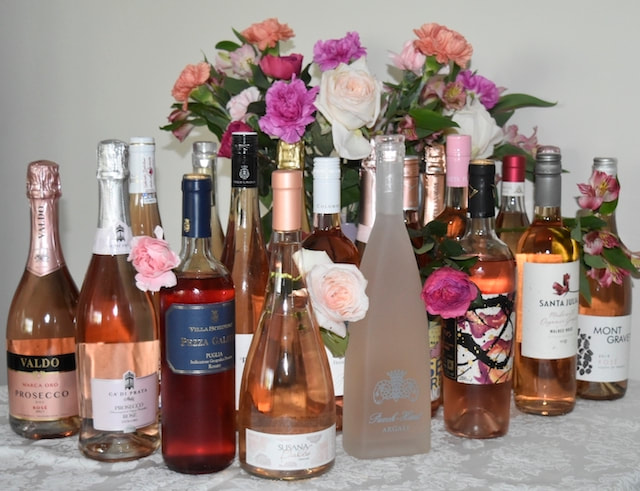
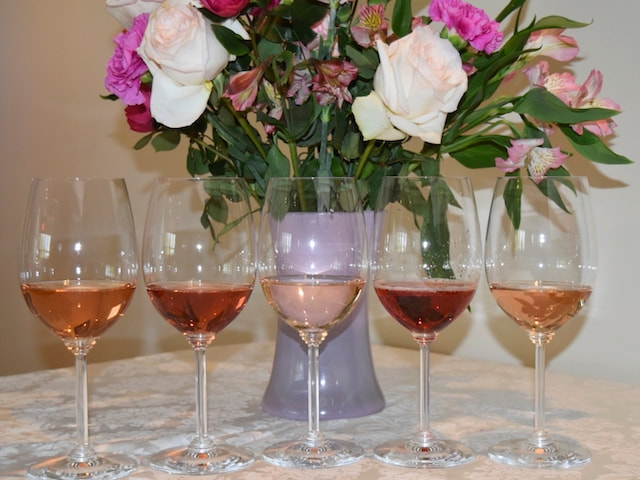
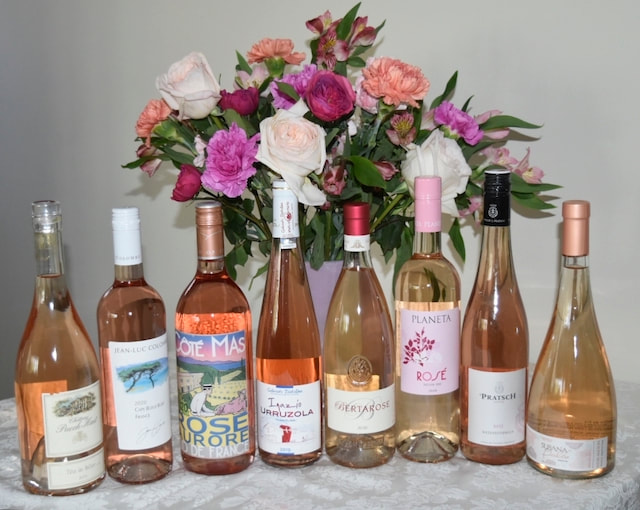
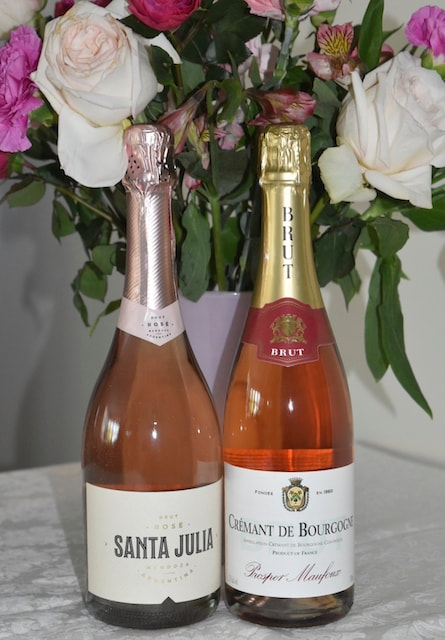
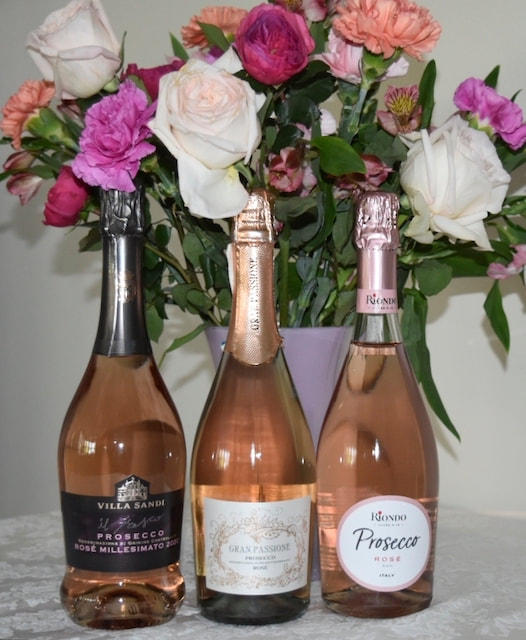
 RSS Feed
RSS Feed